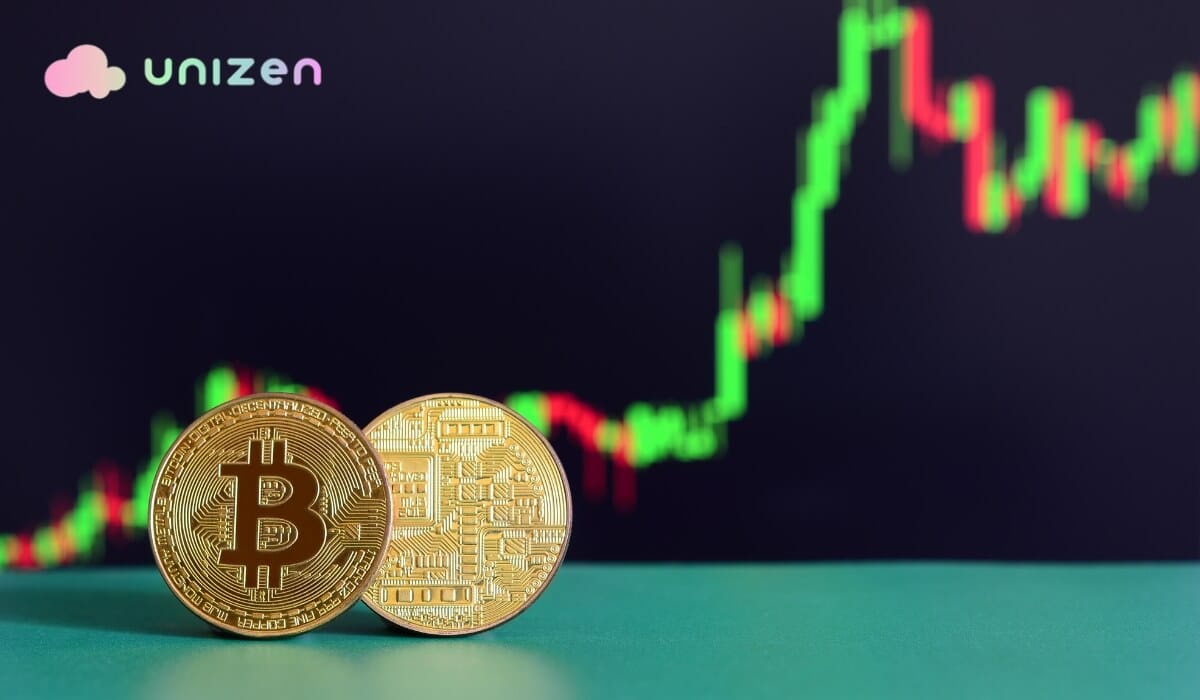What Does Bullish Mean in Crypto?
Learn what bullish means in crypto, including bullish sentiment, key indicators of market uptrends, factors driving investor optimism, and bull run trends.

In cryptocurrency, sentiment drives the movement. Bullish sentiment shows optimism, which is when an individual believes that prices of a cryptocurrency or the market will increase. When investors and traders are bullish, they expect growth, and the optimism usually turns out to be true, as increased buying pushes up prices.
But what does bullish mean in crypto? And how does it differ from being bearish? Let’s take a closer look.
What Does It Mean to Be Bullish on a Cryptocurrency?
In general, the term "bullish" on a cryptocurrency means believing its value will continue to be appreciated. Usually, this frame of mind is based on positive expectations in the financial market, based on trends, technical analysis, news events, or wider economic indicators. Being bullish, however, does not mean complete blindness to risks; instead, it’s all about appreciating opportunities that might show up despite potential downsides.
Characteristics of a Bullish Market
The characteristics of the bull markets can normally be observed in price trends, market activity, and investor behavior:
- Price Increase: A sure sign that one is dealing with a bullish market is the belief that prices will rise or the gradual rise in price for a cryptocurrency or a group of cryptocurrencies. This could be gradual or even explosive, depending on the driving factors. For example, if the Bitcoin currency went from $20,000 to $30,000 in just a few months, it would signify a bull trend.
- Optimistic Investor Sentiment and Higher Demand: On the whole, investors are optimistic about the market's trend when it is bullish. This confidence increases the chance of increased buying pressure in investment decisions on cryptocurrencies and the fear of missing out (commonly referred to as FOMO). The higher the prices, the more investors or traders rush in, afraid they will miss out of the stock.
- High Volume: A common characteristic of all bullish markets is one or a series of high-volume trades. A volume higher than average ensures that the price movement is well-participated in the current market, making an uptrend better and more sustainable.
- Positive News and Events: Positive news or events flow most of the time and drive the bull markets. For example, Donald Trump's win in the November 2024 Election has been very bullish for Bitcoin and other cryptocurrencies. Some institutional investments include major companies adding Bitcoin to their balance sheets, regulatory advancements, the government introducing crypto-friendly policies, and technological upgrades like Ethereum’s transition to proof-of-stake.
Bullish vs. Bearish Sentiment
Bullish and bearish sentiment are terms used to describe the investor's general attitude toward the price movement of a market or stock. In a bullish market, prices will go up, and investors’ behavior is controlled by optimism and confidence. In a bearish market, prices fall, and the universal sentiment is pessimistic. Bearish Investors are cautious; hence, bearish in crypto means more selling activities with falling prices and strong downward trends are recorded.
For example, the Bitcoin bull run from $10,000 at the end of 2020 to almost $60,000 at the beginning of 2021 was driven by institutional adoption and retail enthusiasm. In the 2018 bear market, Bitcoin fell from $20,000 to around $3,000 on the back of overvaluation fears and regulatory uncertainties that dominated sentiment. Note that in either bullish or bearish sentiment, you still need to work with a financial advisor to manage your investment portfolio.

Indicators of a Bullish Market
You should know that bullish trends are never an accident; they are mostly accompanied by well-noticeable signals that signify the growth of confidence and optimism among investors. Some of the key indicators of a bullish market index and how they shape market behavior include the following:
Sustained Price Increase
A bullish market is characterized by a consistent uptrend in prices. This might be in the form of higher highs and higher lows on price charts, reflecting that the asset is gaining value over time. For example, when Bitcoin rose from $20,000 to over $64,000 in its historic rally in 2020-2021, it continuously broke every higher resistance level, showing a strong bull trend. Traders notice this and other patterns through technical analysis, which is usually a good indicator of the market’s momentum.
High Trading Volumes
High volumes mean more participation by retail and institutional investors, further reinforcing upward price movement in bullish markets. If demand for crypto dramatically increases, this can be positive feedback: the more prices rise, the more traders get into the market, which in turn horns the demand further and cements the bullish market.
Market Sentiment and FOMO
The bullish trend is usually characterized by positive market cap sentiment. Optimism among traders and investors can also lead to FOMO, or a fear of missing out, whereby people rush to buy in at a lower price before prices climb even higher. This increased demand pushes prices further upward, sustaining the bullish momentum.
However, bullish markets are often triggered or sustained by favorable news. This can include any announcement of regulatory clarity, partnerships, or endorsements from influential figures. Recognizing the signs of a bull market early will give you a kind of strategic advantage, and when you understand these indicators, it allows you to enter the market at the right time, validate your trading decisions, and leverage external catalysts.
Bull Runs and Their Implications
The term’ bull run’ is one of those exciting phrases in the crypto market. It is a period of fast and continuous price increases that attract new investors and change the market dynamics. During this period, cryptocurrency prices continuously go up over an extended period, mostly with great force. Generally, there is broad optimism, heavy trading activity among crypto traders, and rising investor confidence.
Some historical examples of the cryptocurrency bull runs include:
- 2020-2021 Institutional Bull Run: In large measure, institutional investors’ forays, coupled with inflation and a weakened U.S. dollar, contributed to it. Large firms gained headlines while announcing investments in Bitcoin, thus rapidly propelling it from approximately $20,000 at the close of 2020 to over $64,000 within the first months of 2021.
- The 2017 Bitcoin and Altcoin Bull Run: 2017 Bitcoin surged below $1,000 in January to almost $20,000 by December. The reasons were increased retail interest, the emergence of Initial Coin Offerings, and growing awareness about blockchain. Other altcoins like Ethereum and Ripple experienced a dramatic price uptick during this period.
- The Early 2013 Bull Run: During the early days of cryptocurrency, Bitcoin had its first major bull run, reaching $260 in April and then jumping to $1,100 by November. Although this bull run’s scale is smaller than later bull runs, this period marked Bitcoin’s emergence into the mainstream and laid the foundation for future market cycles.
Bull runs affect investor behavior and market dynamics because they attract new investors. These include those with little to no prior experience in the crypto industry, leading to sharp price increases as demand outpaces supply. Also, speculative behavior tends to dominate, and there is increased volatility as many investors believe prices will continue to rise. This can inflate valuations, sometimes even beyond sustainable levels.
Factors Contributing to Bullish Sentiment
The cryptocurrency market is reactive, and the bullish sentiment usually results from some factors that affect it. Understanding these contributors helps investors to anticipate potential uptrends and capture market opportunities.
Economic Indicators and Their Influence
During periods of rising inflation and uncertainty over fiat currencies, crypto assets such as Bitcoin have started to gain momentum as a hedge against economic uncertainty. Geopolitical events, currency devaluation, or economic crises force investors toward decentralized assets. In such cases, the decentralized and borderless nature of cryptocurrencies makes them a good alternative to the local financial system.
Impact of Regulatory Developments
When governments introduce regulations that ensure transparency and security without dampening innovation, it signals a maturing market. For example, approving Bitcoin ETFs in the U.S. or adopting clear crypto trading taxation laws in some countries has seen historic price surges. Governments and businesses focusing on blockchain for practical implementation tighten the long-term position of cryptocurrencies, making investors look promising.
Technological Innovations
Major blockchain upgrades improve a cryptocurrency’s efficiency, scalability, and security. Growing trends such as DeFi, NFTs, and Layer 2 scaling solutions extend the functionality of these cryptos, and with each new use case, more people become interested, and market demand grows.

The Role of Media Coverage and Public Perceptions
Public perception is one of the most essential drivers of the bullish (or bearish outlook), often influenced by media coverage and social influence. Good coverage from mainstream media or endorsement by influential figures can heighten optimism. Remember when Elon Musk tweeted about Dogecoin and Bitcoin? The prices skyrocketed immediately, with a new wave of investors joining the market.
With more educational initiatives and content on blockchain technology, people’s understanding and trust in the crypto ecosystem increases. As people become more aware, skepticism decreases, and adoption increases, leading to bullish sentiment. On social media platforms like Twitter, Reddit, and Telegram, any viral post, hashtag, or community-driven campaign about the crypto space can influence market sentiment.
Trading Strategies for Navigating a Bullish Market
Buy the Breakout
In a bull market, prices break through key resistance levels, which indicates strong upward momentum. Buying into such breakouts can be very strategic; however, confirm the breakout with indicators like volume spikes to avoid false signals.
Dollar-Cost Averaging
Sometimes, timing the top is almost impossible, even in a rising market. With DCA, you invest a fixed amount regularly, spreading your entries over time. This minimizes the risk of buying at an overinflated price and allows you to benefit from overall upward trends.
Focus on High-Growth Assets
For instance, during the boom of DeFi, tokens like Uniswap and Aave gained immense value. Identifying and investing in high-growth assets could bring in sizeable returns, but due care will be required to avoid falling into the speculative trap.
Diversify Within Strength
While a bullish market may uplift most assets, some do better than others. Spread the risk by diversifying between large-cap assets like Bitcoin and Ethereum to smaller, promising altcoins for overall growth potential.
Also, take note of these risk management techniques during high volatility:
- Place Stop-Loss Orders: Stop-loss orders will automatically sell your assets once the prices are falling to a certain level so that you can lock in your profit or cut your losses.
- Avoid Overleveraging: In a bullish market, one may be tempted to use leverage for higher returns. However, such a strategy amplifies the losses when the market pulls back. Manageable positions would prevent liquidation risks.
- Take Partial Profits: Regularly taking partial profits will protect you against sudden reversals. Lock in some gains whenever prices reach important levels, but keep you invested for further potential upside.
- Keep Tabs on Market Sentiment: Bull markets are driven by hype and FOMO. Watch the sentiment indicators carefully, and don’t get swept away with euphoria. It’s easy to become overexposed to riskier assets.
Long-Term vs. Short-Term Trading Approaches
Long-Term Trading
Pros:
- Less Stress: The long-term investor enjoys the upward trajectory of a bull market without constant price monitoring.
- Tax Efficiency: In some jurisdictions, holding on to assets longer may be beneficial in terms of capital gains tax.
- Compounding Growth: Retaining positions during prolonged bullish trends maximize potential returns.
Cons:
- Opportunity Costs: Long-term holders may miss short-term spikes or opportunities to reinvest profits.
- Market Reversals: Early signs of market reversal, if not acted on, may have the net gains eroded.
Short-Term Trading
Pros:
- Quick Gains: Short-term traders can profit from daily or weekly volatility.
- Flexibility: In general, active traders can more quickly respond to changes in market conditions.
- Risk Reduction: Taking regular profits can lower the impact of steep losses.
Cons:
- Higher Stress: Near-constant monitoring and continuous decision-making can be nerve-wracking.
- Transaction Costs: Frequent buying and selling lead to many fees, which may destroy profit.
- Emotional Trading: The constant pressure of acting upon real-time movements risks triggering reckless decisions.
Challenges and Risks
Though a bull market is usually welcomed with optimism by all investors, one should remember that no uptrend will last for all eternity. If it is too optimistic, it may create huge challenges and risks. Here are some of the possible pitfalls of market sentiments that are too optimistic:
- FOMO-driven investments: FOMO (fear of missing out) is one of the most common psychological traps during bullish markets. With prices rising steadily, investors rush into buying without adequate analysis of the underlying value of the asset in question. This further leads to inflated valuations and overinvesting in hyped but underperforming projects.
- Ignoring Fundamentals: During bullish trends, attention shifts from a cryptocurrency’s utility, technology, or fundamental analysis to its price action. This is speculative, which may result in poorly informed decisions; investors might pour money into projects with weak long-term potential simply because they are trending.
- Euphoric Overconfidence: Prolonged investment or market optimism may result in overconfidence, whereby investors believe the uptrend will never end. This may lead to excessive risk-taking, such as leveraging or completely avoiding diversification, which would make their portfolios very vulnerable in a sudden market downturn. To mitigate these risks, businesses operating in the cryptocurrency space should prioritize secure IT infrastructure for crypto operations to ensure their systems are resilient and protected against unforeseen challenges.
You must do your due diligence and make informed decisions in a bull-run trend. Conduct thorough research and cross-check any cryptocurrency or project in which to invest. Check the experience and trustworthiness of the developers, practical usage in the real world, and project scalability. You also need to understand the market or asset momentum with the help of technical indicators, moving averages, RSI (Relative Strength Index), and MACD (Moving Average Convergence Divergence). Lastly, have an exit plan. An exit strategy is just as important as an entry plan. Clearly define price targets and trailing stops to lock in profit and limit losses when corrections occur. Never get too attached to an asset because of emotional reasons.
Conclusion
The bull trend in the cryptocurrency market means it is a period of growth, opportunity, and optimism. It shows rising prices, strong investor confidence, and a sense of momentum that could drive substantial gains for those who know how to navigate the market. However, this optimism should always be viewed with a degree of carefulness and an understanding of the market developments. Knowing the signs of a bull market- when prices are rising, volumes remain high, and institutions jump in, gives a good understanding of what does bullish mean in crypto.
Success in bearish and bullish times is all about using strategies that balance ambition and risk: diversification of investments, strong risk management techniques, and awareness of broader economic and market trends. Even as great as the rewards are, diligence, careful planning, and maintenance of a long-term vision is needed in a bull or bear market.



